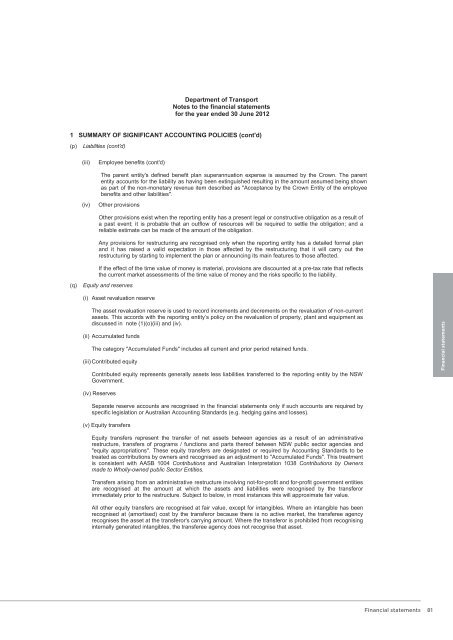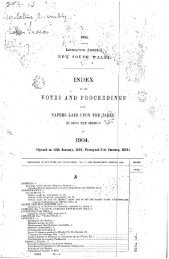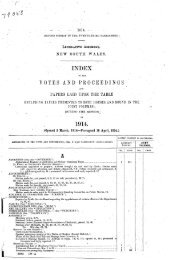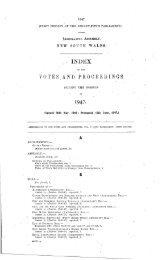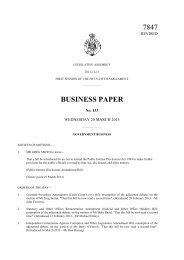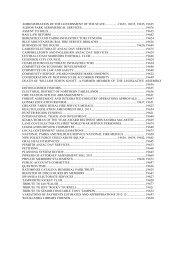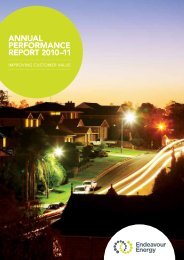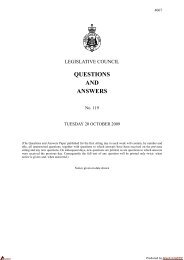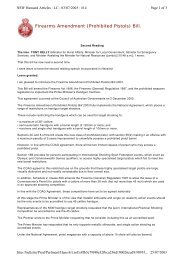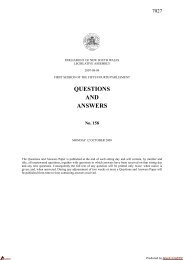annual report 2011â12 - Parliament of New South Wales - NSW ...
annual report 2011â12 - Parliament of New South Wales - NSW ...
annual report 2011â12 - Parliament of New South Wales - NSW ...
You also want an ePaper? Increase the reach of your titles
YUMPU automatically turns print PDFs into web optimized ePapers that Google loves.
Department <strong>of</strong> Transport<br />
Notes to the financial statements<br />
for the year ended 30 June 2012<br />
1 SUMMARY OF SIGNIFICANT ACCOUNTING POLICIES (cont'd)<br />
(p)<br />
Liabilities (cont'd)<br />
(iii)<br />
Employee benefits (cont'd)<br />
The parent entity's defined benefit plan superannuation expense is assumed by the Crown. The parent<br />
entity accounts for the liability as having been extinguished resulting in the amount assumed being shown<br />
as part <strong>of</strong> the non-monetary revenue item described as "Acceptance by the Crown Entity <strong>of</strong> the employee<br />
benefits and other liabilities".<br />
(iv)<br />
Other provisions<br />
Other provisions exist when the <strong>report</strong>ing entity has a present legal or constructive obligation as a result <strong>of</strong><br />
a past event; it is probable that an outflow <strong>of</strong> resources will be required to settle the obligation; and a<br />
reliable estimate can be made <strong>of</strong> the amount <strong>of</strong> the obligation.<br />
Any provisions for restructuring are recognised only when the <strong>report</strong>ing entity has a detailed formal plan<br />
and it has raised a valid expectation in those affected by the restructuring that it will carry out the<br />
restructuring by starting to implement the plan or announcing its main features to those affected.<br />
If the effect <strong>of</strong> the time value <strong>of</strong> money is material, provisions are discounted at a pre-tax rate that reflects<br />
the current market assessments <strong>of</strong> the time value <strong>of</strong> money and the risks specific to the liability.<br />
(q)<br />
Equity and reserves<br />
(i) Asset revaluation reserve<br />
The asset revaluation reserve is used to record increments and decrements on the revaluation <strong>of</strong> non-current<br />
assets. This accords with the <strong>report</strong>ing entity’s policy on the revaluation <strong>of</strong> property, plant and equipment as<br />
discussed in note (1)(o)(iii) and (iv).<br />
(ii) Accumulated funds<br />
The category "Accumulated Funds" includes all current and prior period retained funds.<br />
(iii) Contributed equity<br />
Contributed equity represents generally assets less liabilities transferred to the <strong>report</strong>ing entity by the <strong>NSW</strong><br />
Government.<br />
Financial statements<br />
(iv) Reserves<br />
Separate reserve accounts are recognised in the financial statements only if such accounts are required by<br />
specific legislation or Australian Accounting Standards (e.g. hedging gains and losses).<br />
(v) Equity transfers<br />
Equity transfers represent the transfer <strong>of</strong> net assets between agencies as a result <strong>of</strong> an administrative<br />
restructure, transfers <strong>of</strong> programs / functions and parts there<strong>of</strong> between <strong>NSW</strong> public sector agencies and<br />
"equity appropriations". These equity transfers are designated or required by Accounting Standards to be<br />
treated as contributions by owners and recognised as an adjustment to "Accumulated Funds". This treatment<br />
is consistent with AASB 1004 Contributions and Australian Interpretation 1038 Contributions by Owners<br />
made to Wholly-owned public Sector Entities.<br />
Transfers arising from an administrative restructure involving not-for-pr<strong>of</strong>it and for-pr<strong>of</strong>it government entities<br />
are recognised at the amount at which the assets and liabilities were recognised by the transferor<br />
immediately prior to the restructure. Subject to below, in most instances this will approximate fair value.<br />
All other equity transfers are recognised at fair value, except for intangibles. Where an intangible has been<br />
recognised at (amortised) cost by the transferor because there is no active market, the transferee agency<br />
recognises the asset at the transferor's carrying amount. Where the transferor is prohibited from recognising<br />
internally generated intangibles, the transferee agency does not recognise that asset.<br />
Financial statements<br />
81


